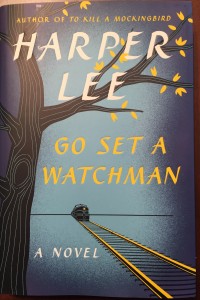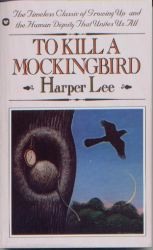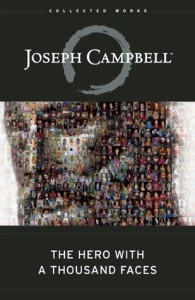
Reactions to Harper Lee’s recently published aren’t going away any time soon. Here are some more that I’ve collected. Again, this list isn’t meant to be exhaustive, but here I’ve included only those pieces that add something new to the discussion rather than just echoing what has already been said.
I offer very short summaries of these articles here. I encourage you to follow the links and read the entire articles for a thought-provoking look at how Go Set a Watchman has entered our national consciousness.
Data Miners Dig for Answers About Harper Lee, Truman Capote and ‘Go Set a Watchman’
 In 2013 Jan Rybicki and Maciej Eder released software capable of comparing word patterns across different books. Rubicki and Eder, both affiliated with universities in Krakow, Poland, have used their software in search of the persistent rumor that Truman Capote, a childhood friend of Harper Lee, wrote at least parts of her famous novel To Kill a Mockingbird.
In 2013 Jan Rybicki and Maciej Eder released software capable of comparing word patterns across different books. Rubicki and Eder, both affiliated with universities in Krakow, Poland, have used their software in search of the persistent rumor that Truman Capote, a childhood friend of Harper Lee, wrote at least parts of her famous novel To Kill a Mockingbird.
By comparing Mockingbird with two of Capote’s works, In Cold Blood and The Grass Harp, the researchers have concluded that in the scene in which Scout and Jem are attacked on their way home from a school performance, the writing style has more in common with Capote’s than with Lee’s:
The researchers aren’t declaring that Mr. Capote wrote the passage but say that at this fraught moment in the narrative, Ms. Lee may have been subliminally using words as Mr. Capote did—or she may have been pulled off her typical authorial voice for some other reason.
Further, in an examination of Go Set a Watchman, “the scholars similarly did not find any parallels between writing by Ms. Lee and Mr. Capote, nor any signs of a strong editor.”
This is an informative article for anyone interested in data mining in the emerging field of digital humanities.
Harper Lee and the hero’s journey
 Charles Kinnaird poses the interesting theory that the differing portrayals of Atticus Finch in Mockingbird and Watchman illustrate Harper Lee’s life considered in light of Joseph Campbell’s theory of the hero’s journey as presented in The Hero with a Thousand Faces:
Charles Kinnaird poses the interesting theory that the differing portrayals of Atticus Finch in Mockingbird and Watchman illustrate Harper Lee’s life considered in light of Joseph Campbell’s theory of the hero’s journey as presented in The Hero with a Thousand Faces:
I would submit that Harper Lee made that hero’s journey, and while her initial return home is reflected in Go Set a Watchman, her transformative work is seen in To Kill a Mockingbird.
Although Watchman has been published much later than Mockingbird, it was apparently written first, then heavily edited into Mockingbird. Therefore, Kinnaird is correct in looking at the novels in this order.
An Evening with the Real Scout Finch
Sarah Galo reports on a reading by Mary Badham, who played Scout in the famous 1962 film version of Mockingbird, of Watchman. Badham told the audience that she thinks Mockingbird came at a perfect time for our country and Watchman has done the same, in light of recent events:
she emphasized the importance of reading both of Harper Lee’s books in light of the “major things” that have come up in the past few weeks. “It all comes down to education. I tell the schools all the time, and I make the kids say it and then scream it: The root of all evil is ignorance.”
How Go Set a Watchman Solves the Mystery of Harper Lee
Boris Kachka writes for Vulture that Watchman is
a crucial biographical document. For every question it raises about its profoundly famous and private 89-year-old author, it also answers a mystery or two about Lee’s life and motivations.
Like other writers who look for the progression from Watchman to Mockingbird, he sees the recent publication as a measure of how Lee’s views about her hometown of Monroeville, AL, changed as she spent her early adult years in New York working at becoming a writer.
Harper Lee’s lingering Civil War ghosts: “Go Set a Watchman” is “a very accurate perspective of what’s going on here in the South”
In an interview with Salon, African American literature professor Angela Shaw-Thorburg of South Carolina State University talks about what Atticus Finch now represents.
About Mockingbird Shaw-Thorburg says:
when I read the novel, and think of it from my students’ perspective, I realize there’s not a lot of space given to black voice in that novel. It’s supposed to be a novel about race, about civil rights, but it’s a conversation between white people… . I’ve never seen it as a big statement about the humanity of black people, and how we need to fight for justice for black people. It’s about supporting the status quo.
And about the portrayal of Atticus Finch in Watchman she says:
It’s almost schizophrenic: On one hand we have an Atticus who says he’s all for justice, on the other hand he goes to Citizens Council meetings. I think this is a very accurate perspective of what’s going on here in the South. It’s part of our DNA. We have racism, but we get really upset if people are rude and crude. The two novels together are an accurate view of where we are as Southerners.
This article includes a link to Angela Shaw-Thornburg’s own review of Watchman in Southern Literary Review.
Atticus Finch Confronted What the South Couldn’t
In this piece in Time magazine Ralph Eubanks addresses the issue of the differences between the two versions of Atticus Finch:
The reason the Atticus of Mockingbird is iconic and the one in Watchman feels alien is because as Lee reworked Watchman into Mockingbird, she tapped into a key component of Southern culture: the need for folk heroes and mythic figures. It is through the folklore of the South that the region places a mirror up to its virtues and failures.
He continues:
Like any Southern liberal of his generation, Atticus does not challenge the foundation of Jim Crow privilege, even though he is actively defending a black client and trying to show his fellow white citizens to learn how to walk in another man’s shoes. He knows that he cannot convince a jury to treat Tom Robinson as an equal. So, Atticus Finch was a man of his time rather than a man before his time.
And finally: “In Watchman, Atticus becomes part of the forces in the South that Lee wrote Mockingbird to counteract.”
Eubanks believes that Watchman should not have been published now but should have been left “to be discovered and studied by scholars as an artifact after Lee’s death.”
America, Meet the Real Atticus Finch
Michael Bourne is a staff writer at The Millions and a contributing editor for Poets & Writers Magazine. Calling Mockingbird “a white liberal fairy tale for the Civil Rights Era,” he goes on to say, “Were it not so clumsily constructed, Go Set a Watchman would be the great undiscovered masterwork of 20th-century Southern literature.”
Bourne has a lot more to say. But what I take issue with—as I said in my review of Watchman—is the notion that the two different Atticus Finches are real people whose contradictory portrayals must be explained to restore sense and balance to our universe.
The two men are literary characters. Each one exists only in his own book, not in both. We may discuss what the two different representations of Atticus Finch say about Harper Lee’s vision, about the times in which she wrote or in which Mockingbird is set, or about what Watchman has to say about current American society. But neither novel’s portrayal of Atticus Finch is better or more realistic or more accurate than the other. We each may, for whatever reasons, prefer one Atticus over the other, but that preference says more about us than it does about Atticus, that imagined fictional character.
Near the end of Watchman Jean Louise’s Uncle Jack, Atticus’s brother, asks her:
“Jean Louise, have you ever met your father?” her uncle asks, and she realizes she never has, not really. Neither have we, though we have been living with Atticus Finch for more than half a century. It is high time we got to know him. The question is whether we will still love him once we have.
I will continue to love the Atticus Finch of Mockingbird. Watchman has not introduced me to the “real” Atticus; it has introduced me to another, different Atticus. Compare the books, but don’t treat them as dueling biographies about the same historical person. Atticus Finch is a literary character, not a flesh-and-blood person.

